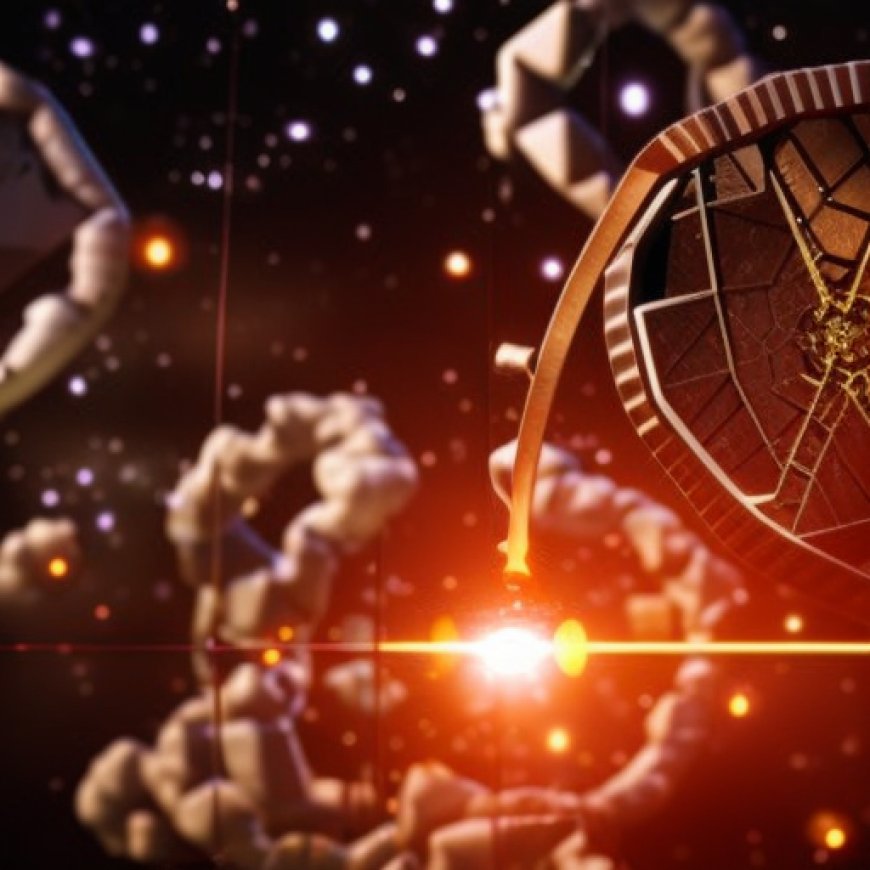Primordial Puzzles: Unraveling the Cosmic Origins of Life in the Lab
Primordial Puzzles: Unraveling the Cosmic Origins of Life in the Lab SciTechDaily


Scientists Investigate Life’s Origins and Potential Development in Cosmic Environments

NASA scientists, along with a global team, are pushing the boundaries to understand how life might originate and evolve in diverse cosmic environments, both within our solar system and beyond.
Introduction
Scientists are conducting extensive research to comprehend the chemical origins of life and its potential development in cosmic environments. They are exploring various scenarios, such as hydrothermal vents, meteorites, potential exotic life on Saturn’s moon, and lab-based Darwinian evolution. This research involves simulating hydrothermal vents, examining meteorites for life’s building blocks, and investigating Titan’s ability to support unfamiliar life forms. By combining laboratory work with space exploration, scientists are paving the way for a promising future in astrobiology.
Exploring Hydrothermal Vents and Meteorites
Interplanetary probes and space telescopes have expanded the search for life beyond Earth. However, laboratory work on Earth remains crucial. Scientists are investigating the chemical origins of life and analyzing samples from other objects in the solar system to identify molecules common to living organisms. Hydrothermal vents, which are considered potential early paths to life, are being studied to understand the chemistry and energy generation associated with these environments. Additionally, meteorites, which have remained unchanged for billions of years, provide valuable insights into the building blocks of early planets and the potential for life.
Darwinian Evolution in a Test Tube
Scientists have even initiated Darwinian evolution experiments in a test tube. By replicating natural selection, they aim to understand how life can sustain and evolve. NASA’s working definition of life, “a self-sustaining chemical system capable of Darwinian evolution,” serves as a guiding principle for these experiments. The goal is to determine the sequence of events that led to the emergence of life on Earth and explore the possibilities of life on other planets within our solar system and beyond.
Potential for Exotic Life on Titan
Titan, one of Saturn’s moons, presents an intriguing possibility for the existence of exotic life forms. Despite its extremely low surface temperatures, Titan has a thick atmosphere, lakes, rivers, and precipitation. These liquid bodies are composed of methane and ethane, raising questions about the potential for life to thrive in such environments. Laboratory experiments have shown that organic material can condense out of these liquids under certain conditions. The upcoming Dragonfly spacecraft mission aims to investigate Titan’s surface and analyze its chemical inventory to determine if the moon could support life or provide insights into alternative biochemistry.
Implications for Understanding Life’s Origins
While laboratory experiments provide valuable insights into potentially habitable conditions and the pathways to the origin of life, there is still much to learn. Researchers emphasize the importance of information capacity in life’s system for recording and transmitting information. The ability to undergo Darwinian evolution and develop new biochemical functions is crucial in defining true life forms. The study of RNA-based systems and the possibility of an “RNA world” preceding DNA-dominated life forms offer valuable clues about life’s early stages.
Conclusion
Astrobiology research is gaining momentum as laboratory understanding of life’s components aligns with groundbreaking space exploration and observations of exoplanets. The focus on extrasolar planets, Mars missions, and upcoming missions to icy outer moons presents exciting opportunities for further discoveries in astrobiology. By investigating life’s origins and potential development in cosmic environments, scientists are contributing to the achievement of the Sustainable Development Goals (SDGs) related to life on Earth and beyond.
SDGs, Targets, and Indicators
1. Which SDGs are addressed or connected to the issues highlighted in the article?
- SDG 9: Industry, Innovation, and Infrastructure
- SDG 13: Climate Action
- SDG 15: Life on Land
- SDG 16: Peace, Justice, and Strong Institutions
2. What specific targets under those SDGs can be identified based on the article’s content?
- SDG 9.5: Enhance scientific research, upgrade the technological capabilities of industrial sectors in all countries, in particular developing countries, including, by 2030, encouraging innovation and substantially increasing the number of research and development workers per 1 million people and public and private research and development spending.
- SDG 13.3: Improve education, awareness-raising, and human and institutional capacity on climate change mitigation, adaptation, impact reduction, and early warning.
- SDG 15.5: Take urgent and significant action to reduce the degradation of natural habitats, halt the loss of biodiversity, and protect and prevent the extinction of threatened species.
- SDG 16.7: Ensure responsive, inclusive, participatory, and representative decision-making at all levels.
3. Are there any indicators mentioned or implied in the article that can be used to measure progress towards the identified targets?
The article does not explicitly mention any indicators to measure progress towards the identified targets. However, potential indicators could include:
- Number of scientific research projects focused on understanding life’s chemical origins and potential development in cosmic environments.
- Investment in research and development in the field of astrobiology.
- Number of educational programs and initiatives on climate change mitigation and adaptation.
- Extent of protection and conservation measures implemented to reduce the degradation of natural habitats and prevent species extinction.
- Level of inclusivity and participation in decision-making processes related to astrobiology research and exploration.
SDGs, Targets, and Indicators Table
| SDGs | Targets | Indicators |
|---|---|---|
| SDG 9: Industry, Innovation, and Infrastructure | SDG 9.5: Enhance scientific research, upgrade the technological capabilities of industrial sectors in all countries, in particular developing countries, including, by 2030, encouraging innovation and substantially increasing the number of research and development workers per 1 million people and public and private research and development spending. | – Number of scientific research projects focused on understanding life’s chemical origins and potential development in cosmic environments. – Investment in research and development in the field of astrobiology. |
| SDG 13: Climate Action | SDG 13.3: Improve education, awareness-raising, and human and institutional capacity on climate change mitigation, adaptation, impact reduction, and early warning. | – Number of educational programs and initiatives on climate change mitigation and adaptation. |
| SDG 15: Life on Land | SDG 15.5: Take urgent and significant action to reduce the degradation of natural habitats, halt the loss of biodiversity, and protect and prevent the extinction of threatened species. | – Extent of protection and conservation measures implemented to reduce the degradation of natural habitats and prevent species extinction. |
| SDG 16: Peace, Justice, and Strong Institutions | SDG 16.7: Ensure responsive, inclusive, participatory, and representative decision-making at all levels. | – Level of inclusivity and participation in decision-making processes related to astrobiology research and exploration. |
Behold! This splendid article springs forth from the wellspring of knowledge, shaped by a wondrous proprietary AI technology that delved into a vast ocean of data, illuminating the path towards the Sustainable Development Goals. Remember that all rights are reserved by SDG Investors LLC, empowering us to champion progress together.
Source: scitechdaily.com

Join us, as fellow seekers of change, on a transformative journey at https://sdgtalks.ai/welcome, where you can become a member and actively contribute to shaping a brighter future.







